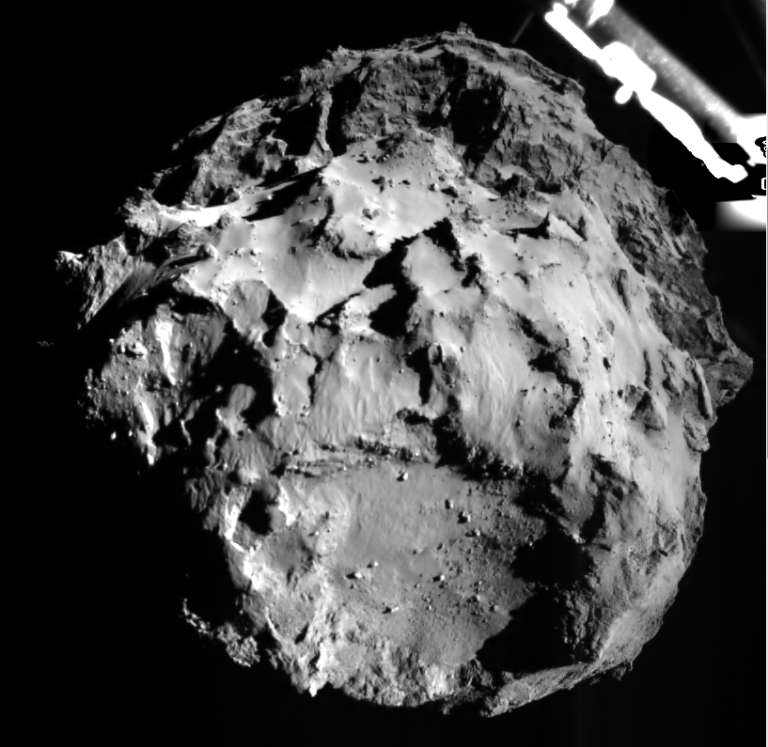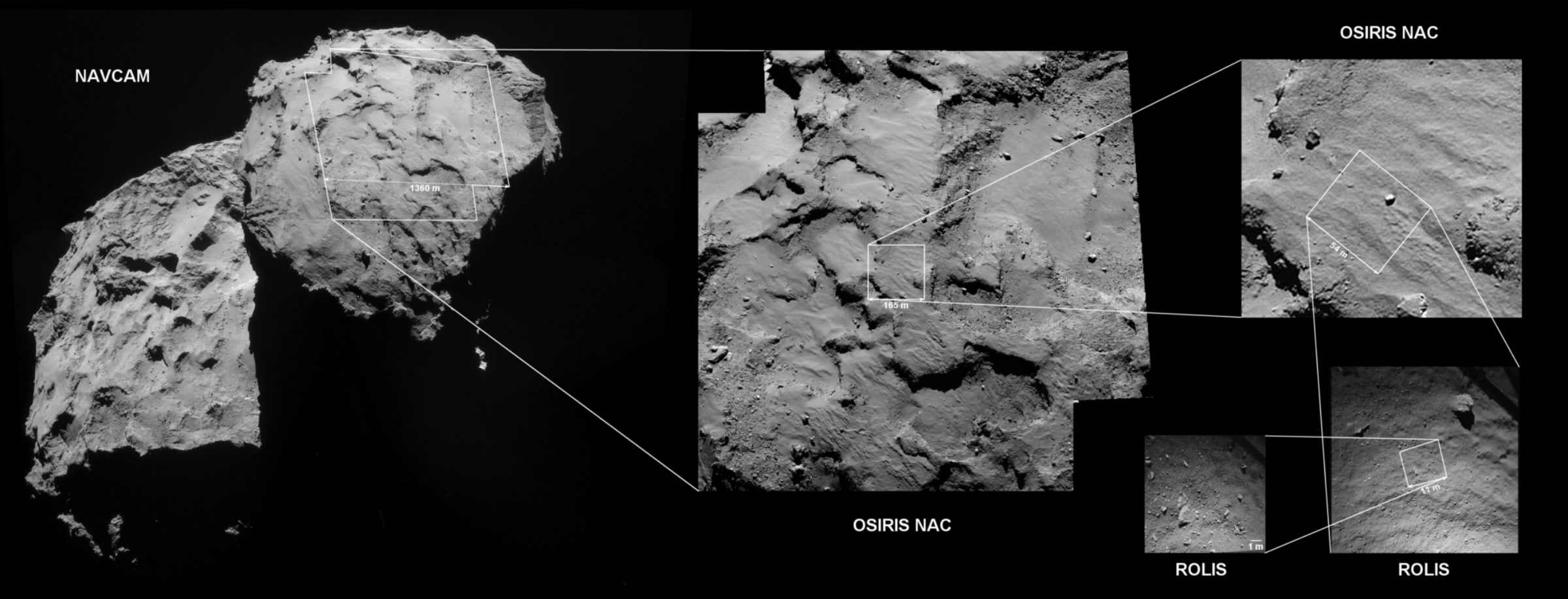Emily Lakdawalla • Nov 12, 2014
PHILAE HAS LANDED! [UPDATED]
The landing happened on time just after 16:02 UT today! Philae mission manager Stephan Ulamec said: "Philae is talking to us! The first thing he told us was the harpoons have been fired and rewound. We are sitting on the surface."
Well, this turned out not to be true. There followed a period of immense confusion about what actually happened upon landing, and it was not helped by the fact that The Planetary Society's website went down for a long period this afternoon. (When our website has major issues, sometimes it can be brought back online in a day-old form that, therefore, does not include the immensely popular posts that triggered the breakdown. While this prevents issues, it also prevents visitors from seeing popular, fresh posts, so it can be frustrating. But our host worked hard to recover us and we're back online in real time now.)
It's now very late in the evening after a long day so I'll suggest to readers that you go to my Twitter stream for the nitty gritty details of what unfolded this evening. But here are the high points:
- Philae landed at 16:03 UT...maybe (see below)
- Philae proceeded to return lots of science data.
- The cold-gas thruster did not fire.
- The harpoons did not fire, either.
- The screws in the landing feet did their screwy thing.
- But there are indications that the lander is not anchored securely to the surface.
- In particular, according to the ROMAP magnetic instrument, Philae actually bounced, producing "3 landings at 15:33, 17:26 and 17:33 UTC." Note the 2-hour delay. That is a lot of time, meaning Philae could've moved a lot of distance between bounces.
- Still, all the science instruments are returning data.
- The most-anticipated data was from the ÇIVA panoramic imager. Although the imaging sequence executed, there was a problem with the data that was returned to Earth; it had black stripes or bars or was just black. It's unclear what went wrong, especially since ÇIVA worked great during descent. They may ask Philae to re-run the ÇIVA sequence while the rest of the science sequence is executing (they can apparently do this in parallel) in order to try to get this important image observation acquired and on the ground.
- But all the rest of the instrument data looks good.
Beyond that, it's mostly speculation. The next press briefing is planned for 2pm local (central European) time tomorrow. I plan to return to ESOC in the late, late morning, after a good night's sleep.
But first, there are a few images to share. Although it's hard to top OSIRIS' image of the departing Philae for drama, it's also very cool to see the first couple of ROLIS descent camera images of the landing site.

There were other ROLIS images that showed up on Twitter. Here, Daniel Machacek has figured out how they all relate to each other, so you can see the first landing site. But this is only the site of the first landing! If Philae really did bounce, and spent two hours before hitting the ground again, it could've wound up in a quite different location.

There's more to say, of course, but I am just completely done for the day. I'll update with more tomorrow. In the meantime: Congratulations Philae! And Rosetta!
Let’s Go Beyond The Horizon
Every success in space exploration is the result of the community of space enthusiasts, like you, who believe it is important. You can help usher in the next great era of space exploration with your gift today.
Donate Today

 Explore Worlds
Explore Worlds Find Life
Find Life Defend Earth
Defend Earth

